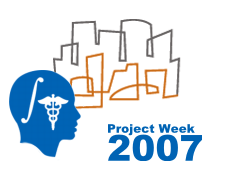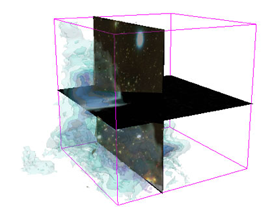Difference between revisions of "Collaboration/Harvard IIC/AstroMed"
m (→References) |
|||
| Line 44: | Line 44: | ||
===References=== | ===References=== | ||
| − | |||
| − | |||
* Michelle Borkin, Alyssa Goodman, Michael Halle, Douglas Alan, Jens Kauffmann, [http://adsabs.harvard.edu/cgi-bin/nph-bib_query?bibcode=2006AAS...209.5706B&db_key=AST&data_type=HTML&format=&high=438a74bfef26079 "Application of Medical Imaging Software to the 3D Visualization of Astronomical Data"], 1/2007, 2007 AAS/AAPT Joint Meeting, American Astronomical Society Meeting 209, #57.06. Presentation: [http://www.cfa.harvard.edu/COMPLETE/astromed/aas209/057.06_borkin.ppt PPT] [http://www.cfa.harvard.edu/COMPLETE/astromed/aas209/057.06_borkin.pdf PDF]. | * Michelle Borkin, Alyssa Goodman, Michael Halle, Douglas Alan, Jens Kauffmann, [http://adsabs.harvard.edu/cgi-bin/nph-bib_query?bibcode=2006AAS...209.5706B&db_key=AST&data_type=HTML&format=&high=438a74bfef26079 "Application of Medical Imaging Software to the 3D Visualization of Astronomical Data"], 1/2007, 2007 AAS/AAPT Joint Meeting, American Astronomical Society Meeting 209, #57.06. Presentation: [http://www.cfa.harvard.edu/COMPLETE/astromed/aas209/057.06_borkin.ppt PPT] [http://www.cfa.harvard.edu/COMPLETE/astromed/aas209/057.06_borkin.pdf PDF]. | ||
Revision as of 18:51, 21 June 2007
Home < Collaboration < Harvard IIC < AstroMed Return to Project Week Main Page |
Key Investigators
- Mike Halle: BWH/Harvard IIC
- Douglas Alan: Havard IIC
- Jim Miller: GE
Objective
We are developing tools and enhancements to ITK and Slicer in order to adapt Slicer to be a tool that is useful for the visualization of astronomical data, specifically spectral line data cubes for now.
Approach, Plan
Our approach is summarized on the Astronomical Medicine web site. The main challenge to this approach, at the moment, is the impedance mismatch between celestial coordinates and medical imaging coordinates, and a lack of infrastructure within ITK and Slicer to allow for alternative coordinate systems.
Our plan for the project week is to implement a mechanism that will allow world coordinate system information to travel through the ITK pipeline via an ITK image's metadata dictionary. If we accomplish this, and there is time left over, then we hope to implement bidirectional procedural transforms to map between voxel coordinates and world coordinates.
Progress
We have implemented an open-source FITS reader for ITK. (FITS is the standard file format for astronomical images.) We currently use this reader to convert FITS files into NRRD files so that they can be read into Slicer.
The FITS file converter is available in both source and binary releases here.
The scientists who use this software at the Harvard IIC have given conference talks and will be publishing papers on the scientific results that they have achieved using the Slicer-based visualization tools.
References
- Michelle Borkin, Alyssa Goodman, Michael Halle, Douglas Alan, Jens Kauffmann, "Application of Medical Imaging Software to the 3D Visualization of Astronomical Data", 1/2007, 2007 AAS/AAPT Joint Meeting, American Astronomical Society Meeting 209, #57.06. Presentation: PPT PDF.
- Michelle Borkin, Alyssa Goodman, Michael Halle, Douglas Alan, "Application of Medical Imaging Software to 3D Visualization of Astronomical Data", 10/2006, ADASS XVI Conference. Presentation: PPT PDF (linked movies).
- Michelle A. Borkin, "A COMPLETE Survey of Velocity Features in Perseus", 5/2006, Harvard University Undergraduate Senior Thesis.
- Michelle A. Borkin, Naomi A. Ridge, Alyssa A. Goodman, Michael Halle, "Demonstration of the Applicability of "3D Slicer" to Astronomical Data using 13CO and C18O Observations of IC348", 5/2005, astro-ph/0506604.
